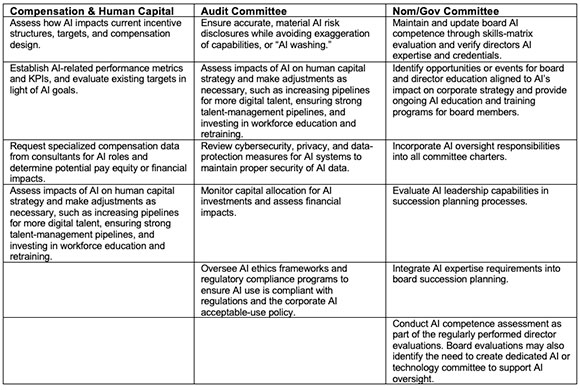The NACD’s 4-Pillar Framework for board AI oversight is instructive for companies of all types and sizes regardless of their current level of maturity in the use or board oversight of AI.
Strategic oversight
- Develop shared understanding among the full board of AI’s strategic relevance and importance.
- Establish a cadence for AI discussions and updates.
- Incorporate AI as a topic in the board’s annual strategy retreat.
Capital Allocation
- Include AI expenses in annual budgeting and approval.
- Regularly review the viability and opportunities for M&A and partnerships to acquire AI capabilities.
AI Risks
- Integrate AI into Enterprise Risk Management.
- Receive regular briefings from AI risk experts.
Technology Competency
- Maintain board-level AI and technology proficiency aligned to corporate strategy and governance needs. This includes board structure, board practices, and director education and experience.
- Establish authority and responsibility for AI within the organization.
- Ensure management and workforce readiness for AI transformation.
- Incorporate AI oversight roles and responsibilities into board committee charters (see below).
Suggested committee oversight responsibilities are as follows:

In addition to examples, case studies, and practice tips, the framework outlines “green flags,” “red flags,” and key performance indicators for each of the pillars that directors can look to for ease of practical implementation of the guidance. The report leverages recent survey data (which we reported on here).